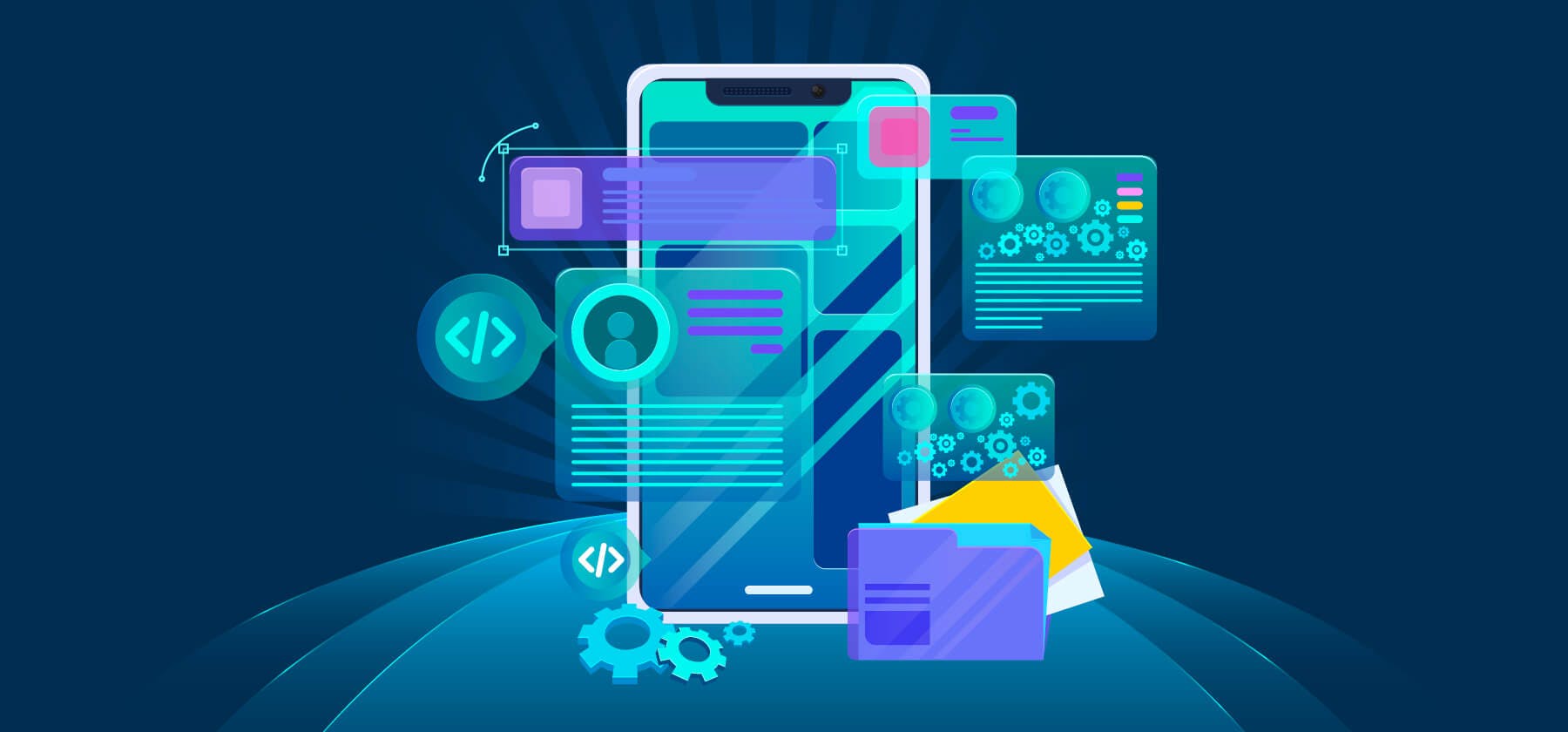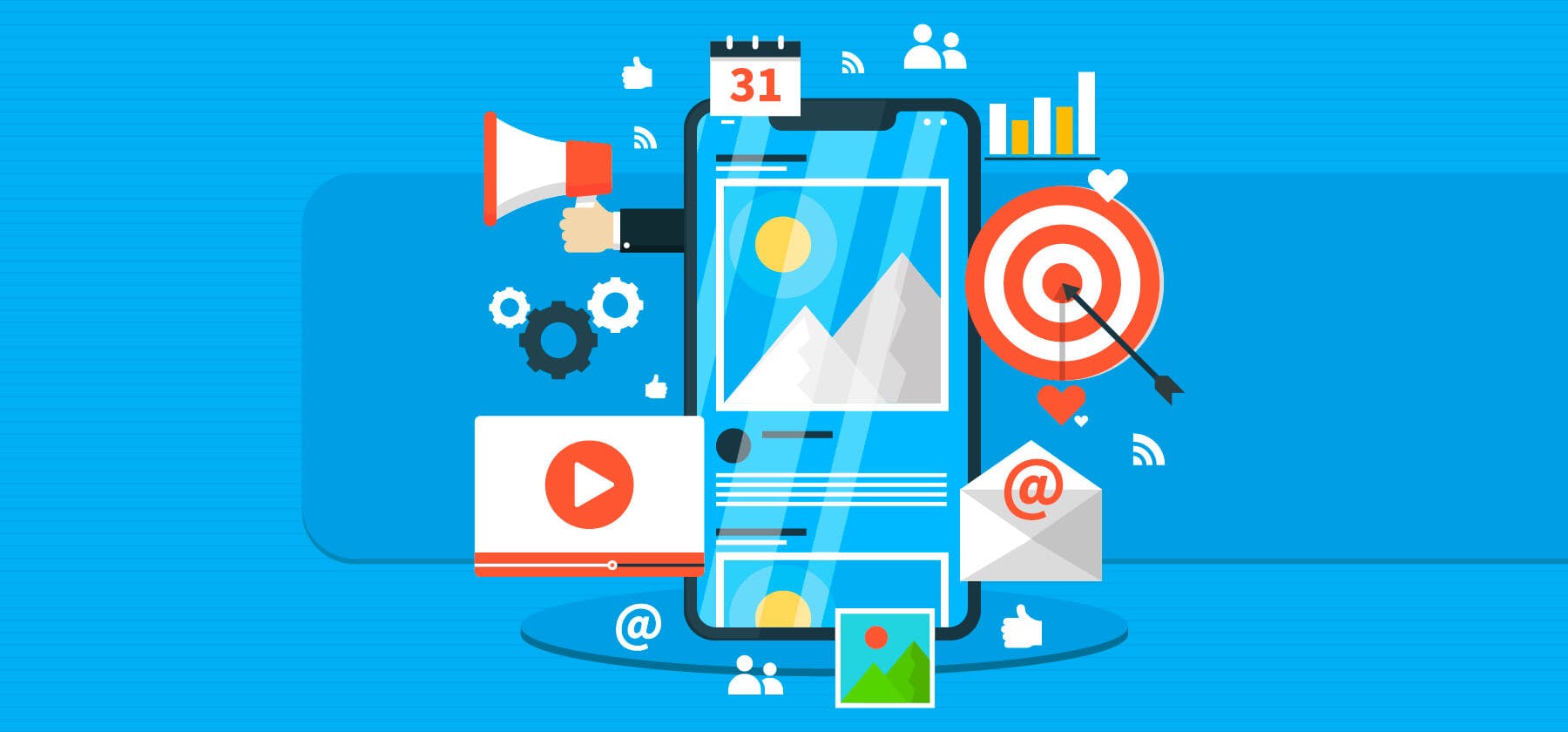- This blog provides a comprehensive understanding of in-app mobile marketing and its importance.
- It also outlines the steps for creating the perfect in-app marketing strategy and talks about the best in-app marketing strategies.
In today's increasingly app-dominated world, the way we interact with brands and services has transformed tremendously. Mobile apps have become a significant part of our lives since they get numerous tasks done with the flick of our wrists. App developers must also forge deeper connections with users, drive engagement and boost revenue. Here is where a strong in-app marketing guide is required.
According to Statista, there were 3.5 million apps available on Google Play Store and 2.2 million apps on Apple App Store in 2022. So, in-app promotions have become the need of the hour for apps to stand out. In this blog, we will explore the multifaceted world of in-app mobile marketing, its role in shaping app success, and how to leverage in-app advertising effectively.
What is In-App Marketing
A marketing campaign developed for and displayed within a mobile app is referred to as in-app marketing. It is a strategy to keep users engaged while actively using an app. Unlike traditional advertising, in-app promotions occur within an app's confines. So, it automatically aids in a good user experience, ensures brand loyalty, and increases retention rate. In-app mobile marketing usually involves targeting users with timely notifications or messages.
The Importance of In-App Mobile Marketing
-
Better User Engagement:
It has become increasingly difficult to capture a user's attention in today's competitive world of mobile apps. In-app promotions increase app engagement by creating personal and interactive experiences.
Personalization is crucial in unlocking connections with users. So targeting users with relevant messages, offers, and notification ensures they feel valued.
Furthermore, interactive communication channels like in-app messages and notifications create a segue for two-way interactions. This creates a sense of community and involvement, encouraging users to participate in discussions or surveys in the app.
-
Enhanced User Retention:
User retention is critical for the long-term success of any app. In-app marketing offers a direct way to communicate with users and helps app developers gather feedback, address potential pain points, and offer support.
It is also possible to conduct targeted re-engagement campaigns with in-app promotions. For instance, apps can send personalized notifications to remind users about their empty shopping carts or wishlist. Such proactive notifications can bring users back to the app and reduce churn rates.
Offering valuable incentives through in-app mobile marketing like exclusive rewards, discounts, and loyalty programs ensures that the users stay loyal and active.
-
Improved Conversion Rates:
In-app promotions provide an ideal environment to promote products or services to users who are already engaged. Users who have invested time in an app are more likely to be receptive to relevant marketing messages and offers. So, in-app marketing will have higher conversion rates when compared to traditional ad campaigns.
It is also important to analyze user behavior and segment the audience accordingly. This will help deliver hyper-personalized messages, and in-app promotions to specific user groups. For instance, an e-commerce app can showcase personalized product recommendations based on a user's browsing or purchase history. This will increase the likelihood of a user purchasing an item.
Looking for the best in-app marketing tool?
How to create in-app mobile marketing strategies
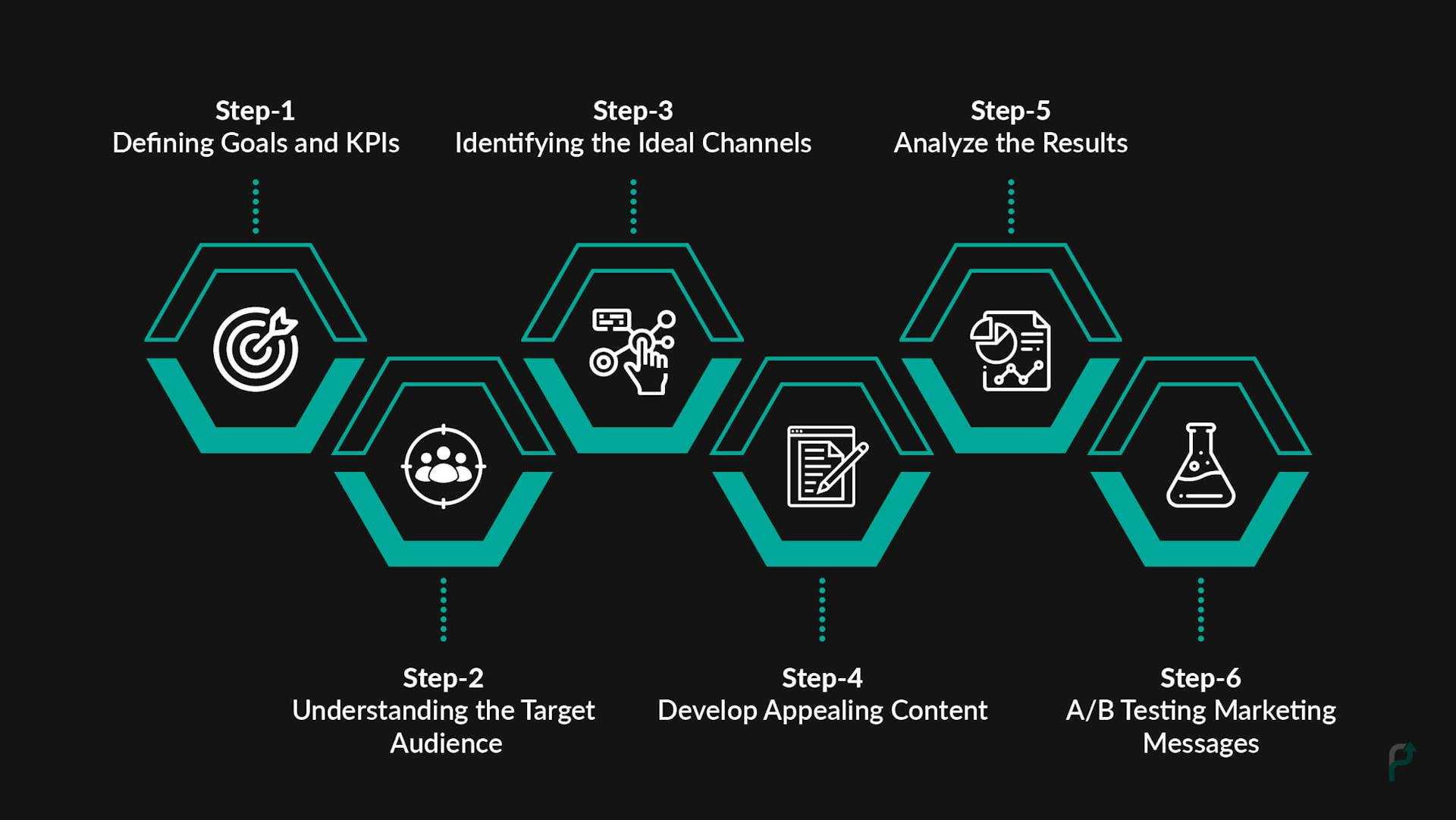 How to Create In-App Marketing Strategies
How to Create In-App Marketing StrategiesApp developers must employ strong in-app marketing strategies to ensure that their app caters to the target audience and continually analyze their app performance. In doing so, publishers can optimize their user acquisition process.
Curating a list of in-app marketing strategies is especially important for publishers not actively leveraging a user acquisition platform.
Here is a step-by-step guide that spells out how to create effective in-app marketing strategies:
-
Defining Goals and KPIs
It is important to set clear goals and Key Performance Indicators (KPIs) before setting up in-app marketing strategies to know where one is headed. Publishers need to understand which stage of the user's journey they seek to impact with their in-app promotions. Publishers need to have a comprehensive understanding of their direction, which may be reducing churn rates, improving trial-to-paid conversions, or maximizing revenue.
-
Understanding the Target Audience
Publishers must understand their target audience to create effective in-app marketing campaigns. Publishers must analyze the target audience, locations, interests, pain points, and behavior to tailor the content to user preferences. It helps deliver relevant content and provide a pleasant user experience.
-
Identifying the Ideal Channels
Publishers must choose the best channels to reach their target audience efficiently. Different users respond to different tactics. For instance, a working man or woman might ignore push notifications but be enticed by in-app promotions. So selecting the right channel will significantly impact user engagement.
-
Develop Appealing Content
Audiences react positively to content they relate to or find interesting more than generic content. So it is vital to stay updated on the new trends and create content or messaging that stands out. This will entice the users more, keep them hooked on the content and ultimately ensure better engagement.
-
Analyze the Results
To increase the effectiveness of marketing campaigns, publishers need to continuously assess and analyze their efforts. Monitoring the KPIs, tracking user behavior, and devising patterns will help refine one's in-app marketing strategies. Publishers must segment users and tailor approaches following the interests of their audience.
-
A/B Testing Marketing Messages
Publishers must implement A/B testing and optimize their app marketing strategies. They must experiment with different copies, messages, and notification styles and understand what resonates best with their audience.
In-App Promotions Best Practices
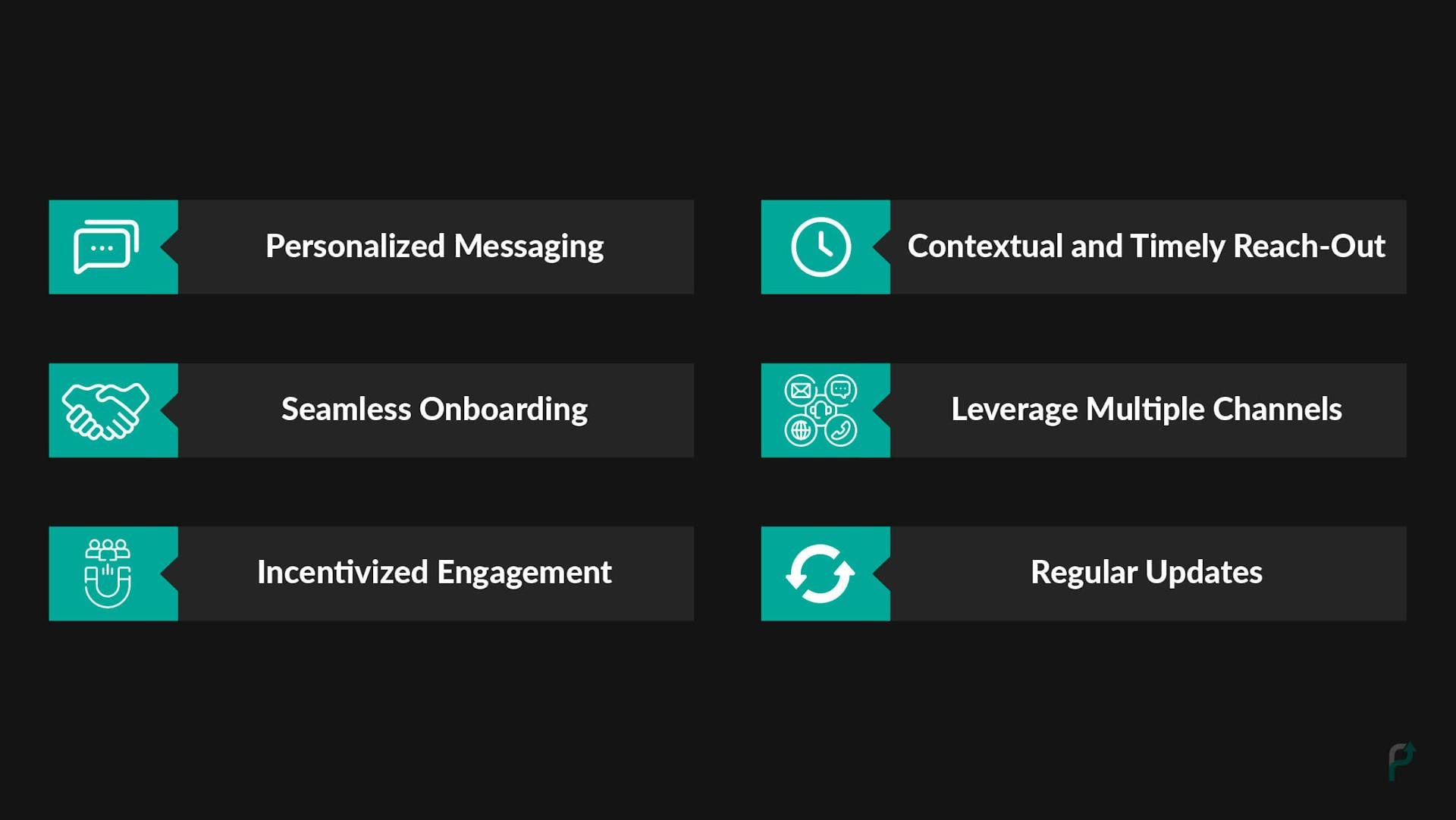 In-App Promotions Best Practices
In-App Promotions Best PracticesApp developers need to incorporate some must-follow practices in their in-app marketing strategy to optimize their app growth process.
Some crucial practices that publishers can incorporate are as follows:
-
Personalized Messaging
Sound in-app marketing campaigns begins with personalized reach outs customized to individual preferences. By leveraging user data, publishers can gauge their preferences and deliver targeted notifications and offers.
For instance, Swiggy sends personalized notifications if users add items to their cart but exit the app before checking out. This will urge the users to return to the app and complete their order. This results in fostering a deeper connection with the users.
-
Contextual and Timely Reach-out
In-app marketing must be contextual and timely to ensure users do not dismiss it. Delivering messages when a user exits the app or giving them an offer before they place an order are ideal points to reach out to the user. This increases the chances of users taking the desired action.
-
Seamless Onboarding
New app users need to experience a smooth onboarding experience. By leveraging micro videos or walkthroughs, in-app marketing can familiarize the users with the app's functions and maximize user retention. Interactive tooltips and tutorials can make the onboarding engaging and informative.
-
Leverage Multiple Channels
Incorporate a multi-channel approach and harness various communication methods like in-app notifications, push notifications, and social media. A well-rounded in-app marketing ensures consistent user engagement and maximizes the chances of reaching more users.
-
Incentivized Engagement
Urge users to engage with the app through gamification and rewards. Instant gratification will create a sense of value and achievement for users and entice them to stay on the app longer. These incentives can include exclusive discounts, rewards, etc.
-
Regular Updates
It is essential to inform users about the app's new features and improvements through in-app messages or notifications. Regular communication builds trust and keeps users engaged. It also shows the app's commitment to enhancing user experience.
7 Best In-App Marketing Strategies
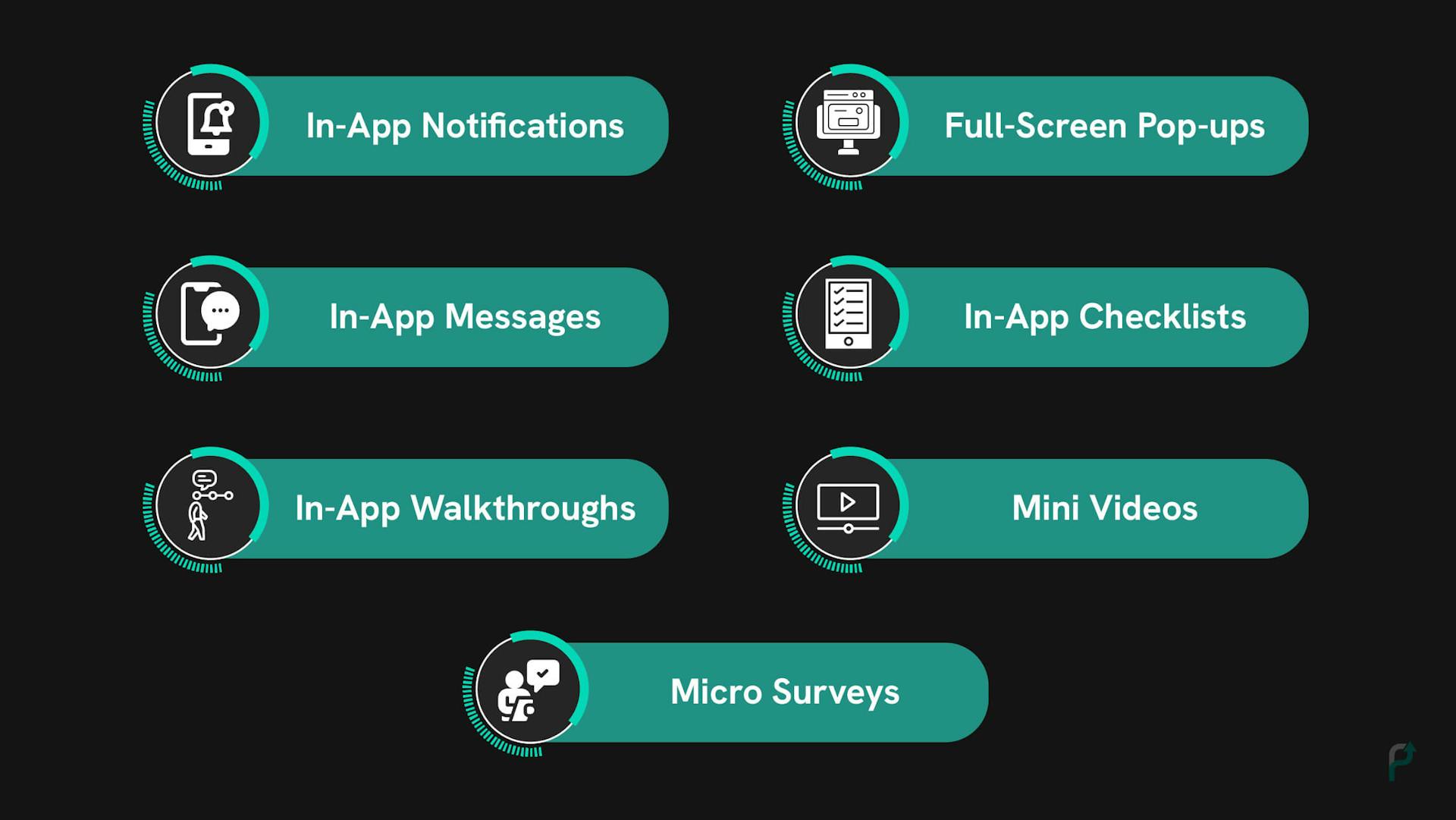 Best In-App Marketing Strategies
Best In-App Marketing StrategiesPublishers must learn about and implement the multiple in-app marketing strategies available. These strategies are instrumental in helping publishers acquire users, increase engagement and ultimately, increase ad revenue. The numerous strategies app developers can leverage to increase app engagement.
The following are the best in-app marketing strategies:
-
In-App Notifications
In-app notifications occur only when the user actively uses the app.
Let's illustrate this concept with an in-app marketing example. Spotify uses a banner notification on top of the screen when users take specific actions like adding a song to their playlist.
They are vital in-app promotion strategies to educate users about special features effectively, encourage them to explore the app, and send them timely, personalized messages. The two types of in-app notifications are push notifications and in-app messages.
Another effective in-app marketing is push notifications. These notifications appear on the user's screen and are specifically designed to attract users to the app by giving them new updates, offers, or promotions.
-
Full-Screen Pop-ups
Full-screen pop-ups or splash pages are in-app marketing strategies that nudge users to act by displaying clear call-to-actions (CTAs). They are used to seek the user's permission, like requesting access to push notifications. Pop-ups usually give the users a detailed account of what they are and help them make informed decisions.
An in-app marketing example that explains this concept is Starbucks, which leverages pop-ups to alert users of referral programs and free beverages. This fosters a sense of control and can lead to increased user engagement.
-
In-App Messages
This is an in-app marketing strategy where messages occur in the form of tooltips and are crucial in the user engagement process.
Tooltips interactively provide contextual guidance and help users navigate the app's features. They can flatten the learning curve for users with easy-to-understand steps and enhance the overall user experience. They are particularly beneficial for apps with complex functionalities.
Tooltips-enabled in-app messages reduce user confusion, ensure a smoother onboarding journey, and thereby increase engagement.
-
In-App Checklists
They are powerful in-app marketing tools that guide users through steps leading to a specific goal or activation. Checklists break down the user's journey into small steps and encourage users to progress from one action to the next.
This approach increases customer satisfaction and reduces churn, as users are motivated to complete the actions contributing to their success within the app, acting as effective app growth strategies.
-
In-App Walkthroughs
This involves gradually creating an interactive user experience by giving them guidance and information. Unlike traditional product tours that inundate users with an overwhelming amount of information all at once, interactive walkthroughs allow users to learn by doing. This step-by-step process significantly increases the likelihood of higher retention rates and deeper engagement.
-
Mini Videos
These videos are a few seconds long and usually offer a compelling way for users to learn about the app and its value propositions. They serve as teasers, capturing the users' attention and encouraging them to explore the app further.
-
Micro Surveys
They are a user-friendly way to collect feedback and data from users. They are usually short and non-intrusive, ensuring higher engagement. These surveys gather insights into the customers' preferences, issues, and expectations. Integrating users' suggestions will help identify areas of improvement and tailor the app's offering to suit the users better.
Start your in-app marketing journey today.
Overcoming Potential Pitfalls
-
Avoid Intrusive Practices
In-app marketing can become counterproductive if messages or notifications become disruptive. Publishers must refrain from bombarding users with constant notifications or aggressive pop-ups. This will result in user frustration and app uninstallation. So it is important to distinguish between relevant promotions and respecting the users' space.
Publishers can resolve this issue through permission-based marketing, where the app seeks the user's consent before presenting notifications. This provides users control over their notification settings and helps them customize their experience. Additionally, publishers can analyze user behavior and preferences based on their response to the notifications.
-
Balancing Monetization and User Experience
App developers often need help maintaining a positive user experience as their revenue goals increase. This can be resolved by integrating in-app purchases and ads strategically.
Offering products or services seamlessly, for example, through Offerwall ads, can guarantee a good user experience and help monetize the app effectively. By serving contextual ads promptly, publishers can keep users engaged for longer.
-
Adapting to Users' Preferences
In-app marketing need to constantly adapt to changing user preferences and behavior. Since user behavior evolves with time, driven by social trends, technological advancements, etc., staying updated on these changes is vital to retain users.
Conducting regular surveys and gathering feedback to understand users' needs and interests is essential. This will offer insights into emerging behaviors and patterns, which can be easily incorporated into one's in-app marketing strategy.
Conclusion
This comprehensive in-app marketing guide has explored the essential strategies and best practices to create a successful in-app marketing strategy. In-app promotions are a powerful tool to build meaningful connections with users, ensure brand loyalty and drive sustainable revenue growth.
We hope you found this blog informative and interesting. Keep watching this space because we have more insightful content coming your way!
The only ad platform built for developers by developers.
Contact us now for a product that fits your needs! It’s quick, simple and easy.

